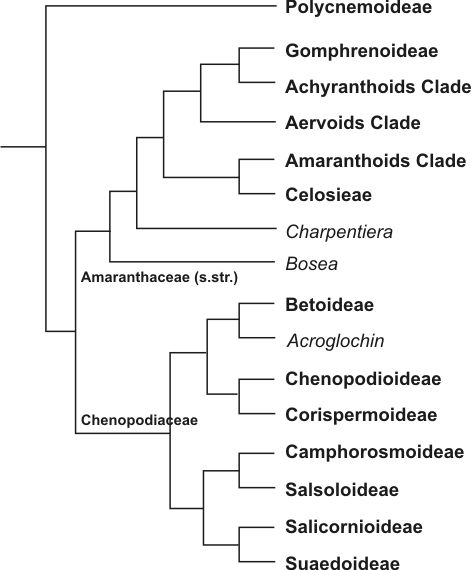|
Salsola
''Salsola'' is a genus of the subfamily Salsoloideae in the family Amaranthaceae. The genus ''sensu stricto'' is distributed in Australia, central and southwestern Asia, North Africa, and the Mediterranean. Common names of various members of this genus and related genera are saltwort (for their salt tolerance) and tumbleweed or roly-poly. The genus name ''Salsola'' is from the Latin , meaning . Description The species of ''Salsola'' are mostly subshrubs, shrubs, small trees, and rarely annuals. The leaves are mostly alternate, rarely opposite, simple, and entire. The bisexual flowers have five tepals and five stamens. The pistil ends in two stigmata. The fruit is spherical with a spiral embryo and no perisperm. Systematics The genus name ''Salsola'' was first published in 1753 by Linnaeus in ''Species Plantarum''. The type species is ''Salsola soda'' L. The genus ''Salsola'' belongs to the tribe Salsoleae ''s.s.'' of the subfamily Salsoloideae in the family Amaranthaceae. The ... [...More Info...] [...Related Items...] OR: [Wikipedia] [Google] [Baidu] |
Salsola Basaltica
''Salsola'' is a genus of the subfamily Salsoloideae in the family Amaranthaceae. The genus ''sensu stricto'' is distributed in Australia, central and southwestern Asia, North Africa, and the Mediterranean. Common names of various members of this genus and related genera are saltwort (for their salt tolerance) and tumbleweed or roly-poly. The genus name ''Salsola'' is from the Latin , meaning . Description The species of ''Salsola'' are mostly subshrubs, shrubs, small trees, and rarely annuals. The leaves are mostly alternate, rarely opposite, simple, and entire. The bisexual flowers have five tepals and five stamens. The pistil ends in two stigmata. The fruit is spherical with a spiral embryo and no perisperm. Systematics The genus name ''Salsola'' was first published in 1753 by Linnaeus in ''Species Plantarum''. The type species is ''Salsola soda'' L. The genus ''Salsola'' belongs to the tribe Salsoleae ''s.s.'' of the subfamily Salsoloideae in the family Amaranthaceae. Th ... [...More Info...] [...Related Items...] OR: [Wikipedia] [Google] [Baidu] |
Salsoloideae
The Salsoloideae are a subfamily of the Amaranthaceae, formerly in family Chenopodiaceae. Description These are herbs, subshrubs, shrubs and some trees. Stems and leaves are often succulent. The ovary contains a spiral embryo. In most genera, scarious wings develop at the outside of the fruiting perianth, allowing for dispersal by the wind ( anemochory). In tribe Caroxyleae, the stamens have vesiculose anther appendages, discolor with anthers, that probably play a role for insect pollination. In tribe Salsoleae the anther appendages are absent or small and inconspicuous. Distribution The area with most species ( center of diversity) are the deserts and semideserts of Central-Asia and the Middle East. Distribution of the subfamily extends to the Mediterranean, to Middle-Europe, north and south Africa, and Australia, some species have also been introduced to America. Many species grow in dry habitats ( xerophytes) or tolerate salty soils (halophyte A halophyte is a salt- ... [...More Info...] [...Related Items...] OR: [Wikipedia] [Google] [Baidu] |
Amaranthaceae
Amaranthaceae ( ) is a family of flowering plants commonly known as the amaranth family, in reference to its type genus '' Amaranthus''. It includes the former goosefoot family Chenopodiaceae and contains about 165 genera and 2,040 species, making it the most species-rich lineage within its parent order, Caryophyllales. Description Most species in the Amaranthaceae are annual or perennial herbs or subshrubs; others are shrubs; very few species are vines or trees. Some species are succulent. Many species have stems with thickened nodes. The wood of the perennial stem has a typical "anomalous" secondary growth; only in subfamily Polycnemoideae is secondary growth normal. The leaves are simple and mostly alternate, sometimes opposite. They never possess stipules. They are flat or terete, and their shape is extremely variable, with entire or toothed margins. In some species, the leaves are reduced to minute scales. In most cases, neither basal nor terminal aggregations of leav ... [...More Info...] [...Related Items...] OR: [Wikipedia] [Google] [Baidu] |
Salsola Baranovii
''Salsola'' is a genus of the subfamily Salsoloideae in the family Amaranthaceae. The genus ''sensu stricto'' is distributed in Australia, central and southwestern Asia, North Africa, and the Mediterranean. Common names of various members of this genus and related genera are saltwort (for their salt tolerance) and tumbleweed or roly-poly. The genus name ''Salsola'' is from the Latin , meaning . Description The species of ''Salsola'' are mostly subshrubs, shrubs, small trees, and rarely annuals. The leaves are mostly alternate, rarely opposite, simple, and entire. The bisexual flowers have five tepals and five stamens. The pistil ends in two stigmata. The fruit is spherical with a spiral embryo and no perisperm. Systematics The genus name ''Salsola'' was first published in 1753 by Linnaeus in ''Species Plantarum''. The type species is ''Salsola soda'' L. The genus ''Salsola'' belongs to the tribe Salsoleae ''s.s.'' of the subfamily Salsoloideae in the family Amaranthaceae. Th ... [...More Info...] [...Related Items...] OR: [Wikipedia] [Google] [Baidu] |
Tribe (biology)
In biology, a tribe is a taxonomic rank above genus, but below family and subfamily. It is sometimes subdivided into subtribes. By convention, all taxa ranked above species are capitalized, including both tribe and subtribe. In zoology, the standard ending for the name of a zoological tribe is "-ini". Examples include the tribes Caprini (goat-antelopes), Hominini (hominins), Bombini (bumblebees), and Thunnini (tunas). The tribe Hominini is divided into subtribes by some scientists; subtribe Hominina then comprises "humans". The standard ending for the name of a zoological subtribe is "-ina". In botany, the standard ending for the name of a botanical tribe is "-eae". Examples include the tribes Acalypheae and Hyacintheae. The tribe Hyacintheae is divided into subtribes, including the subtribe Massoniinae. The standard ending for the name of a botanical subtribe is "-inae". In bacteriology, the form of tribe names is as in botany, e.g., Pseudomonadeae, based on the ge ... [...More Info...] [...Related Items...] OR: [Wikipedia] [Google] [Baidu] |



